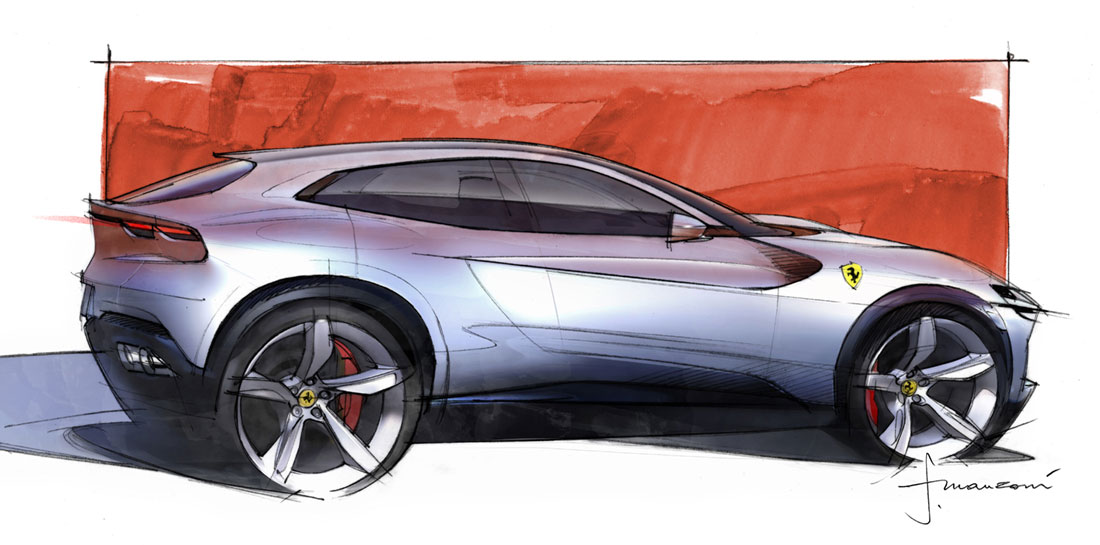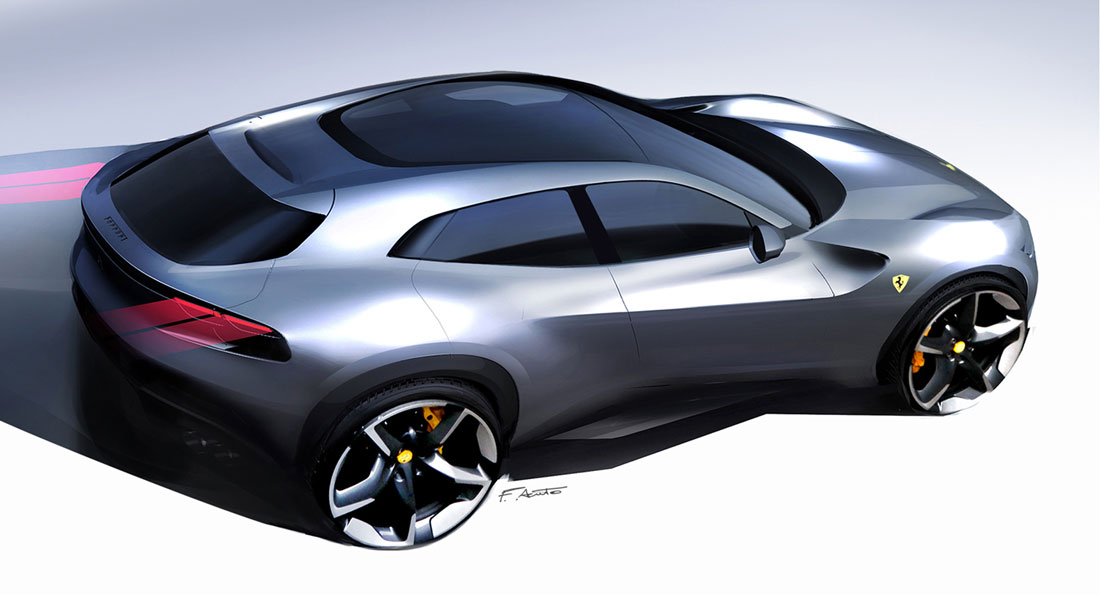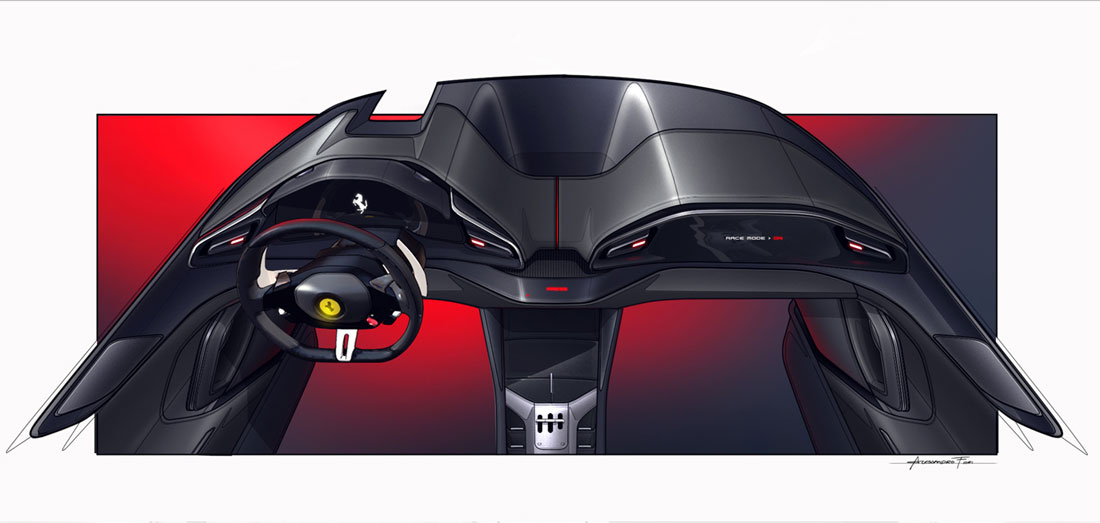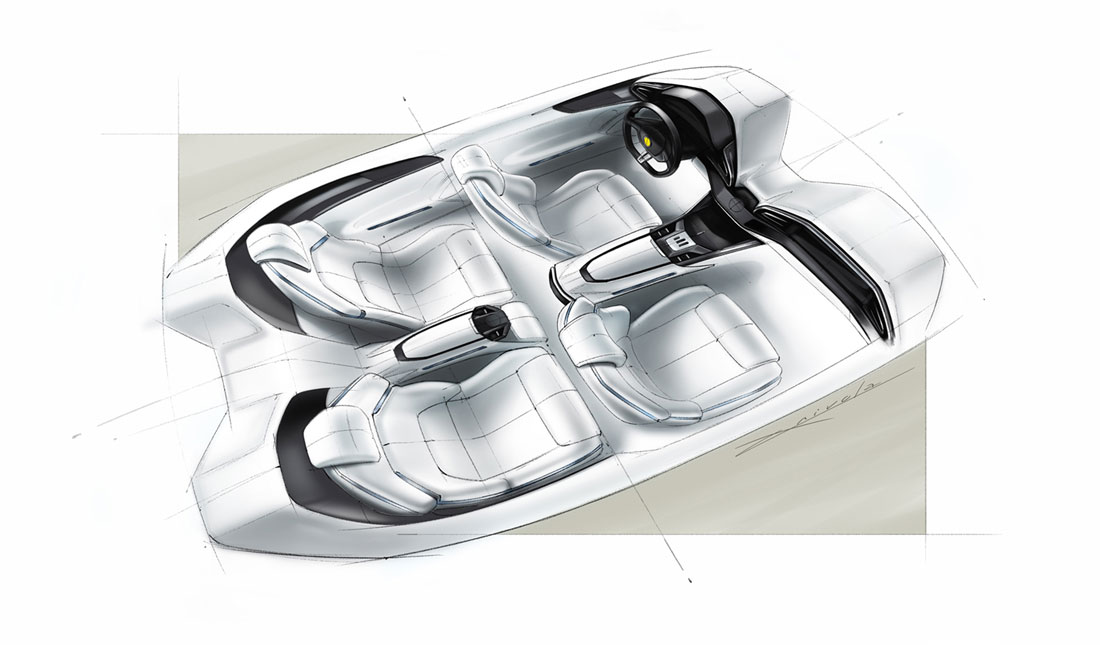From the very first pencil stroke it couldn’t have been clearer: the long-awaited four-seater, four-door Ferrari, something completely new in the history of the Prancing Horse, would not be an SUV. “Our aim was to create an innovatively architectured sports car that could not be classified in any existing pigeonhole”, says Flavio Manzoni, Ferrari’s Design Chief. For him and his team, the Purosangue represents a successful new chapter in the marque’s history, with elegance and power marking the spectacular final result.
A new ground to be explored
So the ground to be explored was new, while the direction to be followed was clear-cut. “Once we had pinpointed the functional elements, we had, as always, to add the proportions and balance of volumes typical of Ferrari. This is what we call design, not style, even though we work with a strong artistic vein and a sculptural approach”.
As its name implies, the Purosangue (thoroughbred in English), was designed to be a true Ferrari sports car (the 725 bhp naturally aspirated V12 engine is confirmation). This is why it is in fact the exact opposite of an SUV: rather it is a large, raised coupé, with rippling muscles and a front end that minimises height through a shrewd mix of design and aerodynamics.
Focus on aerodynamics
The exterior forms are a hymn to aerodynamic research, but it was the design that dictated the line, literally speaking, confirm Andrea Militello and Federico Acuto (Head of GT Cars, Exterior Design and Advanced Designer and Exterior Lead Designer of the Purosangue respectively). To ensure harmony of volumes, the body of the car is formed of two layers: an ‘underbody’, the darker area at the base, dedicated to technology, and an ‘upperbody’ that resulted in a sculpture that seemingly floats, almost as if it were suspended, over the wheel-arches. An effect emphasised by the patented trim that separates the wheelarch moulding from the bodywork.
The choice of double-leaf doors
Appealing at first glance, the Purosangue reveals itself in all its glory when both doors are opened. A choice that implies industrial complexity, given that the rear door is attached to a single large central hinge that supports its weight and ensures it opens independently against the direction of travel, facilitating accessibility without having to increase the wheelbase too much.
The dual cockpit
It is also surprising to discover how great roominess has been achieved in such sinuous external proportions. The physical space is assisted by interior styling that lightens the volumes to point up the horizontal development, with a dual cockpit dashboard that avoids the usual centre screen, and sections that appear to form round the human figure, seeming to welcome the occupant with an embrace, explain Angelo Nivola (Head of Sports Cars, Interior Design) and Alessandro Fiori (Sports Cars Interior Lead Designer).The cabin is at once signature Ferrari, a sports GT of sophisticated luxury, and yet new in every single component.
Opulent materials but responsible
Everything has been designed ad hoc for the Purosangue including of course the four separate seats, a “first” for the Prancing Horse marque. The opulence of the interior is also a result of the choice of materials, to which the team led by Silvia Cavallaro, head of C&T, dedicated much attention. Opulent but responsible: in the launch version, 85% of the upholstery is eco-sustainable (roof and carpets made from recycled materials, and a special new Alcantara), while a ballistic-derived fabric and carbon fibre with copper inserts offer equally novel and distinctive alternatives.
(Full article in A&D n. 257)
















